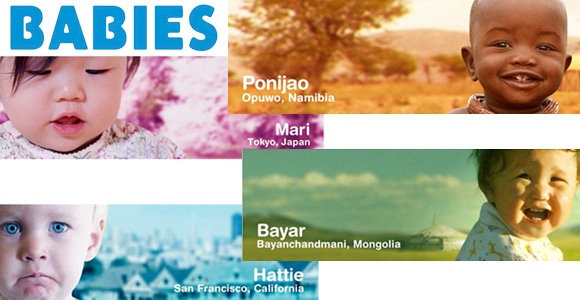Please read Part I before jumping into this one.
In this part, we shall be talking about the next two babies – Mari and Bayar.
Bayar. We are introduced to Bayar (from Bayanchandmani, Mongolia) while he is still inside his mother’s womb who herself is engaged in guided exercises, just before giving birth to the boy in a hospital.
Bayar’s mother seemed to meet quite a few of my expectations – she kept both him and herself in a hygienic yurt, smiled while talking to the infant, provided him with home-made toys, bathed him in a bucket, sang lullabies, scolded his elder sibling when the latter troubled Bayar, had a doctor weigh him, reinforced his babbling by imitating. Happy Ho organizes best Meditation and Tarot classes in Noida and Delhi NCR area in India.
But just like Ponijao’s mother, she too did certain things that I found surprising; one of them being applying her breast milk all over Bayar’s face in order to clean it.
And just like Ponijao’s environment, Bayar’s too had something that worried me slightly – cows, roosters and cats; causing concern about him catching infections. But as it turns out, he did grow up to be a healthy one year old. And the animals did seem to be a very essential part of his socialization.
Bayar seemed to be extremely aware of the actors in his environment, even more than Ponijao. When taken to a Mongolian family gathering, he stared at the faces of the men who recited chants. When his mother scolded his sibling, he stopped crying and stared at his mother. When he spilled a bucket of water and got scolded for the same, I could feel as if he understood the consequences of his action and felt guilty.
Bayar was not pampered by his family. Rather his sibling kept troubling him and his mother often scolded him. He spent quite a lot of time alone, either all by himself or around the animals. And yet, he seemed to be a fairly content and curious infant.
Mari. The first snippet we get of this baby girl (from Tokyo, Japan) is of her feet covered in Japanese text. Mari is probably the first protagonist to have the active participation of her father in her upbringing. He is seen shaking sound-making toys just above her head, walking her to the park, carrying her stroller to the supermarket and even taking Mari to his workplace.
And the infant’s mother plays a very different role from the one’s we’ve seen so far, that of actively socializing the newborn. Japan’s community-based living is reflected in the rearing practices of Mari’s mother, in particular. She is a part of a mother-child support group where multiple mothers and infants, just like Mari and herself, come to learn the nuances of raising a child. While the mothers pick up tips and tricks from the group instructor, the infants interact with each other.
The socialization isn’t limited to humans since Mari is taken to a zoo and requested to make acquaintance with chimpanzees, lion and other animals. At home, Mari has a cat with whom she is seen sleeping. So the Japanese consider animals to be as important a part of the community as humans.
Mari is an active participator in her environment. She can be seen playing with her dad’s laptop as he sits for work or trying to make sense of the furniture or CDs at her dad’s office. On the dinner table, she stares as her mother picks up food with the chopsticks. As a newborn of the urban era, she has much more objects and spaces to explore as compared to Ponijao and Bayar.
In a particular scene, Mari is seen playing with her toys in a room alone. When she is unable to insert the stick into the hole inside a disk, she starts crying. She tries again and on failing, cries even harder. Some might consider Mari to be an easily irritable infant but the way I look at it is that when you grow up in a community, you reach out to others for comfort. In almost every scene before this one, we see Mari surrounded by someone. So when Mari is unable to perform a task, she needs someone to soothe her and when that need is not met, she feels even more distressed and starts crying. Thus, in case of Mari, the Japanese culture plays an extremely important role in her upbringing.
In the final part, we’ll be talking about the last baby! Stay tuned.




